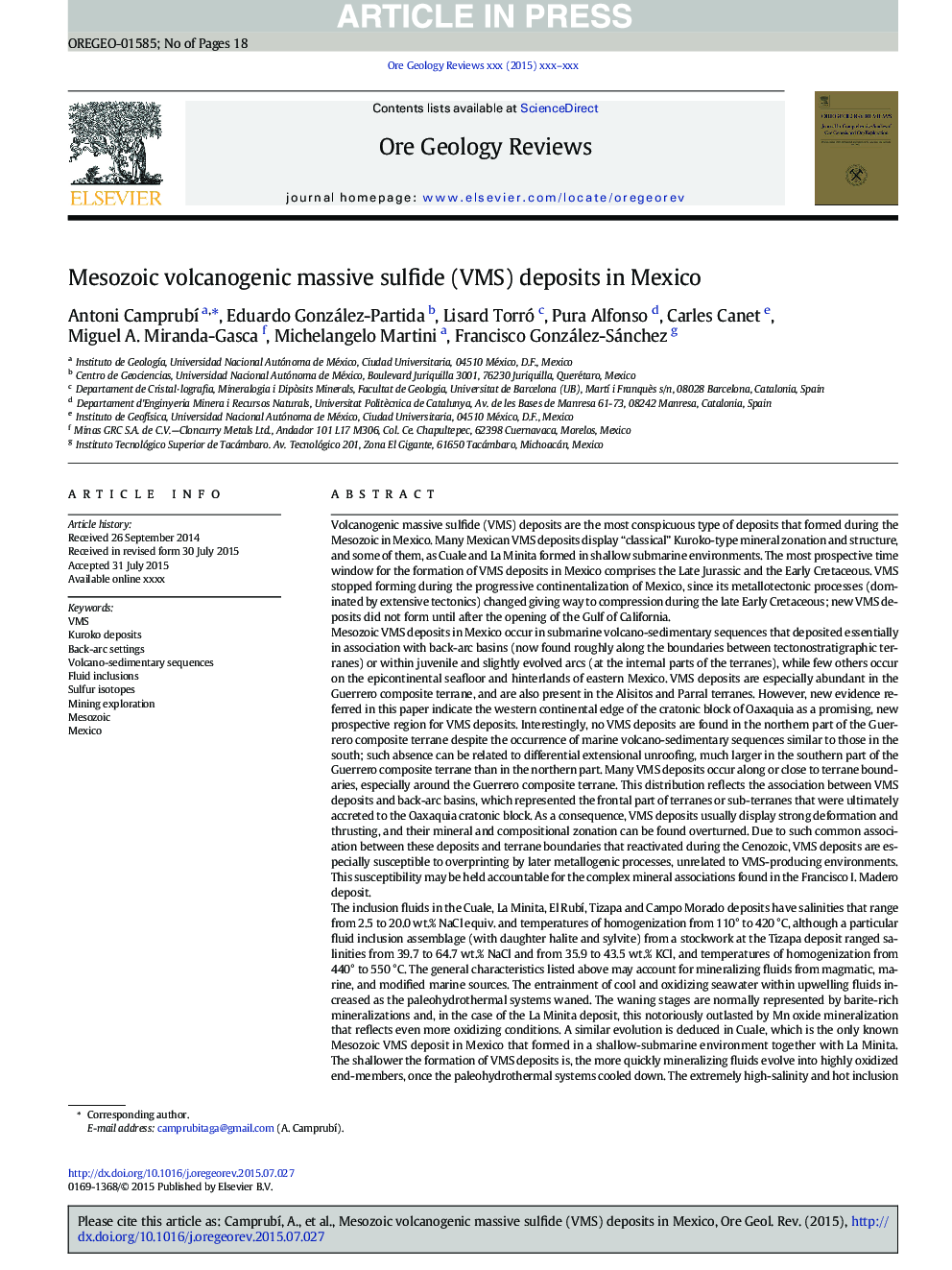| Article ID | Journal | Published Year | Pages | File Type |
|---|---|---|---|---|
| 5782532 | Ore Geology Reviews | 2017 | 18 Pages |
Abstract
As for the temporal evolution of the studied deposits, they generally exhibit (1) an increasing magmatic contribution from early to middle stages for both fluids (as mineralizing fluids grew hotter and more saline) and sulfur, and (2) the waning of hydrothermal activity towards the last stages on mineralization, which is characterized by the prevalence of seawater (as fluids grew cooler, and more diluted and oxidizing), thus reflecting quite a typical evolution for most VMS deposits elsewhere. New δ34S values for the same VMS deposits reflect multiple sources of sulfur in the mineralizing fluids: magmatic, sedimentary/metasedimentary, and marine. Different degrees of dominance of either source for sulfur in these deposits and in their stages of mineralization have been inferred, in a way that also responds to a schematic evolution from magmatic- to seawater-dominated paleohydrothermal systems.
Related Topics
Physical Sciences and Engineering
Earth and Planetary Sciences
Economic Geology
Authors
Antoni CamprubÃ, Eduardo González-Partida, Lisard Torró, Pura Alfonso, Carles Canet, Miguel A. Miranda-Gasca, Michelangelo Martini, Francisco González-Sánchez,
